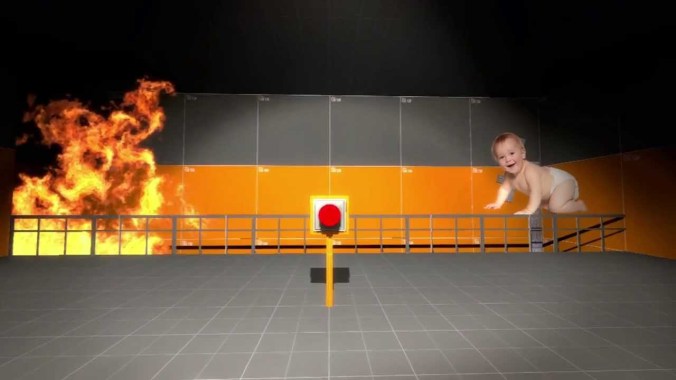I’ll be giving two talks in Pittsburgh over the next two months on May 13 and June 22, 2016.
1. Friday, May 13, 2016 — 2:30 – 4:30. Part of a panel on “The Novel in or against Neoliberalism” at the 2016 Studies in the Novel Conference, The Novel in or against World Literature, Wyndham University Center – Oakland Room II.
Chair: Jen Fleissner, Indiana University
“The Megatext and Neoliberalism,” Bradley J. Fest, University of Pittsburgh
“The Novel in India and Neoliberalism,” H. Kalpana, Pondicherry University
“The Novel and Neoliberal Empathy,” Alissa G. Karl, The College at Brockport-SUNY
“Immanent Value in The Golden Bowl,” Paul Stasi, University at Albany-SUNY
The Megatext and Neoliberalism
With the steadily increasing storage capacity and processing power of contemporary information technology, enormously large texts are beginning to emerge that rival the books and libraries once imagined by Jorge Luis Borges. For instance, at some point in the near future, poet and novelist Richard Grossman will install Breeze Avenue—a five thousand volume, three million page “novel”—as a reading room in Los Angeles, and will also make this text available online in a fluid version that will change roughly every seven minutes for a century. Grossman’s text is, quite simply, too big to read; it is a megatext. This paper will consider the appearance of the unreadably massive novel as an emergent form native to the neoliberal era.
The writing, publication, and distribution of megatexts are impossible without the informatic, technological, and economic transformations of neoliberal globalization. For instance, the composition of Breeze Avenue would be inconceivable without big data and algorithmically generated text, without significant funding and personal wealth (Grossman was a high-level executive for a multinational financial firm in the 1970s), and without transforming the labor of the author from writing to managing. Mark Z. Danielewski’s twenty-seven volume meganovel-in-progress, The Familiar (2015- ), takes full advantage of contemporary digital composition and production to create a work deeply enmeshed in the digital present by self-reflexively remediating the new media forms made possible by the distributed networks and posthuman technologies of the twenty-first century—including electronic literature, premier serial television, social media, videogames, and YouTube. And Mark Leach’s seventeen volume, ten thousand page, open source, digitally generated meganovel, Marienbad My Love (2008), takes advantage of crowd-sourced, collective authorship, reflecting the always-on unpaid digital microlabor that has come to characterize work in the overdeveloped world. Understanding such texts as unique outgrowths of and important critical reflections upon the age of neoliberalism allows us to explore important questions about the role of the novel in the twenty-first century and the possibilities for responding to the nonhuman logics of contemporaneity.
2. Wednesday, June 22, 2016, 1:30 – 3:00, I’ve organized a panel on “Videogame Adaptation” with Jedd Hakimi and Kevin M. Flanagan, colleagues in the Film Studies Program at the University of Pittsburgh, for the Keystone DH 2016 Conference, Hillman Library, University of Pittsburgh. (A schedule of the conference.)
Videogame Adaptation

As videogames continue to emerge as a dominant twenty-first-century form, it is becoming clearer that they have complex relationships to other media. This panel, part of a larger collaborative project, will address issues of adaptation and videogames from a transmedia perspective, drawing particularly on the resources provided by film and literary studies.
Videogame Adaptation: Some Experiments in Method
Kevin M. Flanagan, University of Pittsburgh
This paper outlines the concerns and conceptual practices of videogame adaptation, noting the many ways in which videogames shape, or are shaped by, ideas, narratives, and mechanics from other media. In situating videogames into the discourses of textual transformation that animate current work in adaptation studies, I argue that traditional approaches to adaptation in English departments (which privilege novel-to-film adaptation in a one-to-one correspondence) have a lot to learn from games, which function as adaptations at all stages of their production and consumption. I also demonstrate how adaptation studies challenges claims to medium specificity that form a foundational conceit of videogame studies.
Metaproceduralism: The Stanley Parable and the Legacies of Postmodern Metafiction
Bradley J. Fest, University of Pittsburgh
Most critics of contemporary literature have reached a consensus that what was once called “postmodernism” is over and that its signature modes—metafiction and irony—are on the wane. This is not the case, however, with videogames. In recent years, a number of self-reflexive games have appeared, exemplified by Davey Wreden’s The Stanley Parable (2013), an ironic game about games. When self-awareness migrates form print to screen, however, something happens. If metafiction can be characterized by how it draws attention to language and representation, this paper will argue how self-reflexivity in videogames is best understood in terms of action and procedure, as metaproceduralism.
Playing Los Angeles Itself: Experiencing the Digital Documentary Environment in LA Noire
Jedd Hakimi, University of Pittsburgh
Almost everything about the predominantly faithful depiction of 1947 Los Angeles in the recent, police-procedural videogame LA Noire (2011) was based on archival material, including period maps, photography, and film footage. And while scholars have thought extensively about how film spectators experience mediated depictions of real-world cities, the videogame player’s parallel experience has been relatively unexplored. Accordingly, I take LA Noire’s simulacrum as an opportunity to reflect on what happens when a real-world environment is adapted into the setting for a videogame. Specifically, I position LA Noire in the tradition of the “city-symphony” film and a particular sub-set of Film Noir known as the “semi-documentary” to make the case LA Noire contains crucial aspects of the documentary image. Consequently, LA Noire is not so much creating a fictional, diegetic world, as it is presenting our own world back to us in a manner that changes the way we experience the world in which we live.
